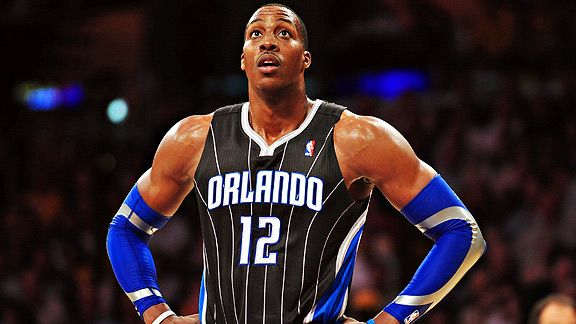The recent induction of Dwight Howard into the Naismith Memorial Basketball Hall of Fame is a moment that compels a deeper look at one of the NBA`s most compelling — and perhaps misunderstood — careers. A first-ballot Hall of Famer, Howard`s resume speaks for itself: an 8-time All-Star, 8-time All-NBA selection, and a staggering 3-time Defensive Player of the Year. Yet, despite these ironclad credentials, a pervasive sense lingers that his peak dominance is often understated, overshadowed by a career trajectory that, while ultimately triumphant, was anything but linear.
Superman`s Ascent: Unparalleled Dominance in Orlando
For a significant stretch of the late 2000s, Dwight Howard was simply “Superman.” His physical gifts were immense: a chiseled physique, explosive athleticism, and an insatiable appetite for rebounding and shot-blocking. From 2008 to 2012, Howard not only led the Orlando Magic to unprecedented heights, including the 2009 NBA Finals, but also commanded a defensive presence that few centers in league history could rival. He became the only player to win three consecutive Defensive Player of the Year awards, a testament to his singular impact on that end of the floor.
His offensive game, while often criticized for its inefficiencies, was nonetheless impactful. He led the league in dunks for six straight seasons, a testament to his ability to finish at the rim and generate easy points. More critically, his gravity in the paint allowed the Magic, under coach Stan Van Gundy, to pioneer a modern offensive philosophy: surrounding a dominant big man with an array of three-point shooters. This strategy made the Magic a formidable force, leading the league in three-point attempt rate for five consecutive seasons during Howard`s peak, while simultaneously boasting a top-tier defense that stifled opponents at the rim.
Consider his company: Howard is one of only 19 players in NBA history with five consecutive first-team All-NBA selections. This elite club includes legends like Shaquille O`Neal, George Mikan, LeBron James, Kobe Bryant, and Tim Duncan. For Howard to be in such company, yet still be considered “underrated” by some, is a curious case indeed. One might even suggest a touch of irony in deeming a first-ballot Hall of Famer as overlooked.
The Peculiar Case of the NBA 75th Snub
The argument for Howard`s underrated status gains traction when examining his exclusion from the NBA 75th Anniversary Team. Of the 26 players in NBA history with at least five first-team All-NBA nods, Howard is the sole modern-era player not to make that prestigious list. The only others omitted were pre-3-point era stars. This glaring omission begs the question: how does a player with such undeniable individual accolades, who was a legitimate top-5 MVP candidate for half a decade, miss the cut?
Part of the answer lies in the nature of his career arc. Unlike paragons of longevity such as Robert Parish, who accumulated impressive career totals through sustained production well into his 30s, Howard`s career trajectory was more akin to a rocket: a spectacular launch to incredible heights, followed by a somewhat rapid descent. His value peaked early and intensely, with his “rest of career” Wins Above Replacement (WAR) being a mere fraction of his initial eight seasons. This stark contrast suggests a bias towards sustained excellence over a prolonged period, rather than valuing a concentrated, era-defining peak.
“His early dominance was a marvel, a throwback to an era of truly imposing centers, yet wrapped in the athleticism of a modern game. To witness him orchestrate both ends of the floor was to understand what `impact player` truly meant.”
From “Superman” to Journeyman: A Narrative Shift
The latter half of Howard`s career saw a significant shift in his public perception. Following his departure from Orlando in 2012, a move marked by controversy and back surgery, Howard embarked on a journeyman phase, playing for six different teams in his final six seasons. He transitioned from the league`s most dominant center to a respected, albeit reduced, role player. This period, while less glamorous, was not without its own quiet triumphs.
His stint with the 2019-20 Los Angeles Lakers, culminating in an NBA championship, served as a poignant redemption. Playing alongside JaVale McGee, Howard formed a formidable center rotation that allowed Anthony Davis to thrive at his preferred power forward position. It was a testament to his adaptability and willingness to embrace a new role, shedding the “Superman” cape for the more pragmatic, but equally valuable, role of an experienced veteran contributor.
The Enduring Legacy
Dwight Howard`s Hall of Fame induction is more than just a recognition of his statistical achievements; it`s an opportunity to re-evaluate his entire legacy. While his career had its share of “warts” – poor free-throw shooting, an occasional turnover spree, and sometimes questionable decision-making off the court – these should not eclipse the sheer, unadulterated dominance he displayed at his apex. He was a force of nature, a defensive anchor, and an offensive catalyst for a groundbreaking Orlando Magic team.
In an era often criticized for a perceived lack of truly dominant centers, Howard was a resounding exception. He represented the last of a dying breed, a traditional big man who could bend games to his will with athleticism and power. His journey from “Superman” to seasoned champion highlights a career rich in paradoxes: a first-ballot Hall of Famer who still feels strangely undervalued. Perhaps now, with the bronze bust officially cast, the basketball world can fully appreciate the true magnitude of Dwight Howard`s extraordinary, albeit complex, impact on the game.







